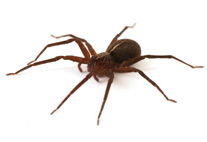Abstract
The western Pacific marine clupeoid fish, Spratelloides atrofasciatus Schultz, 1943, previously regarded as a synonym of S. gracilis (Temminck and Schlegel, 1846), is redescribed here as a valid species on the basis of the holotype and 115 non-type specimens collected from the Ryukyu Islands. Both S. atrofasciatus and S. gracilis are similar chiefly in having a midlateral band that does not fade anteriorly. S. atrofasciatus differs from Spratelloides gracilis in having fewer anal fin rays, pectoral fin rays, vertebrae and gillrakers. Spratelloides atrofasciatus also has a shorter head length, a shorter upper jaw length, a shorter snout length, a wider lateral band equal to the eye diameter; numerous black pigment spots on the inner side of the gill opening that are visible from the outside in preserved specimens (vs not visible in S. gracilis). The two species are sympatrically distributed in the Ryukyu Islands. Spratelloides atrofasciatus matures from 32 mm SL and grows to a known maximum size of 45mm SL, while S. gracilis matures from about 50 mm SL and grows to over 100 mm SL.

